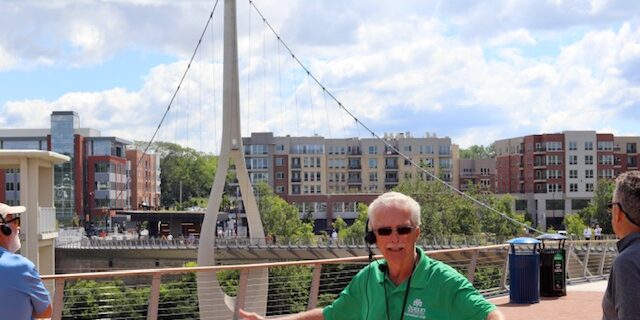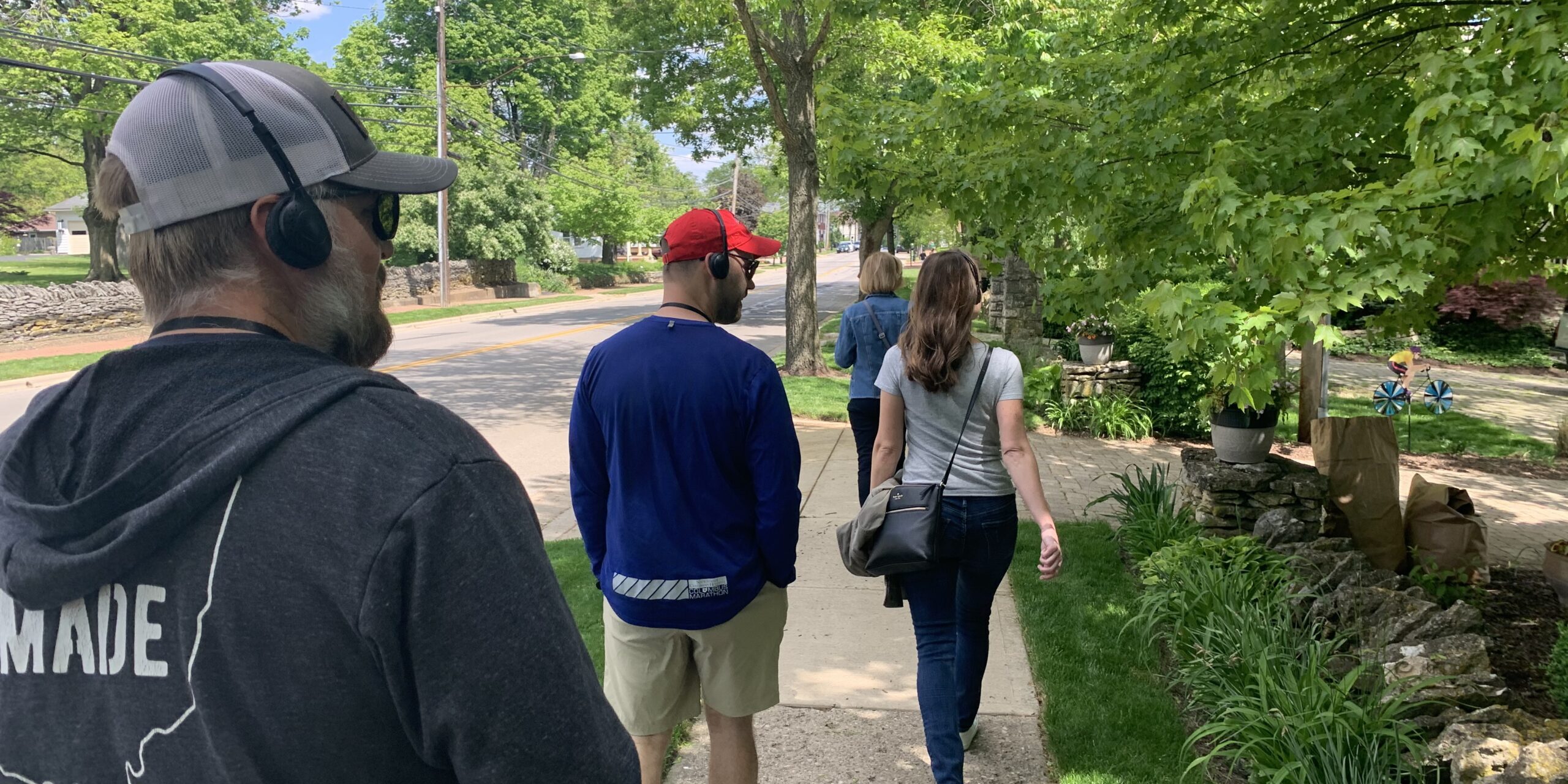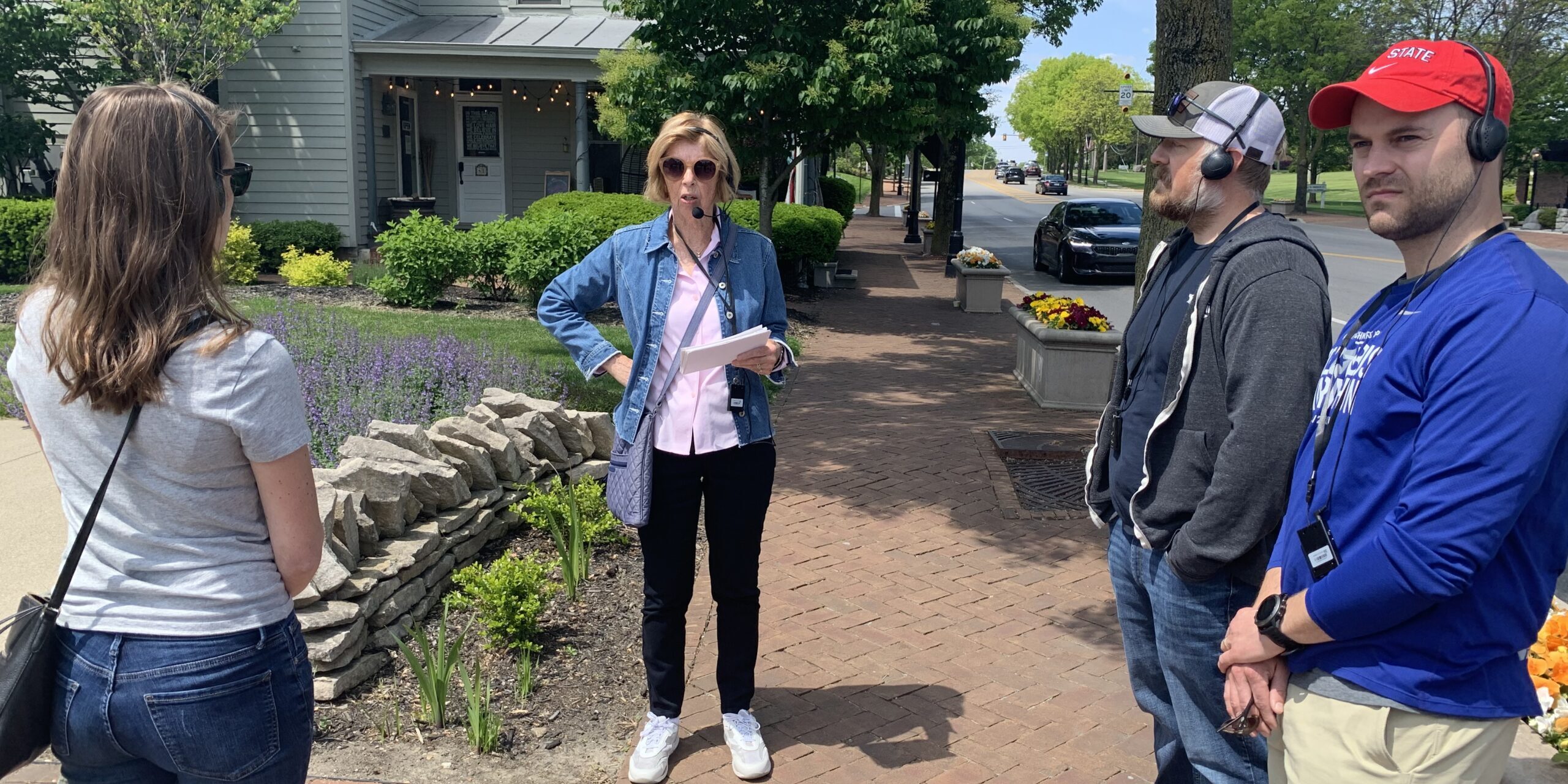Historic Dublin
Walking Tours
Starting in the heart of the Historic District only a short distance from the site where the Sells brothers first set up their lodgings, visitors can take a step back in time on these few city blocks. Enjoy the charm of the district, the architecture of the homes and stores, and take in the sights along banks of the Scioto River from the beautiful stone bridge on the river’s edge.
We hope you will take advantage of the walking tour of the Historic District and tell your friends and neighbors of this charming part of our city.
For a self-guided tour map CLICK HERE



You can also stroll through
Dublin’s past virtually now!
Fill out a form to sign
up for a walking tour!
Dublin Springs
There were several features of the land which drew Peter and Benjamin Sell to the area now known as Dublin. Among these was the Scioto River which provided transportation to Franklinton (now Columbus), further south to the Ohio River and even further downstream to the port of New Orleans. Other discoveries included vast forests, land well-drained by the Scioto’s tributaries, later named Indian Run, Hayden Run, Deer Run, and others. The Sells brothers knew this would be good for agriculture once the land was cleared. Large quantities of stone, clay, sand and gravel were available as building materials.
The Sells brother settled at the highest point above the Scioto River along its run from La Rue to Portsmouth to minimize chances of flooding, south of the west end of the Scioto River Bridge that takes Route 161/44 over the water. Just below this point lies the Dublin Spring, where the brothers and passing travelers would collect the naturally flowing freshwater to drink. However, the water is not safe to drink from today.
One could also infer that the Native Americans also took water from the same spring while traveling the major route along the river from one hunting ground or trading site to another. In the first stages of the evolution of transportation, Dublin Road and Riverside Drive acted as mere walking paths.
In 1991 the Dublin Kiwanis upgraded the area for the public to enjoy underneath the bridge with steps and a walkway leading to the riverbank. We highly encourage everyone to visit the Dublin Spring as it is a wonderful spot from which to view the beauty of the stone bridge.

Registered Properties
The National Register of Historic Places is the official list of historic properties recognized by the federal government as worthy of preservation for their local, state, or national significance in American history, architecture, architecture, archeology, engineering, or culture. Overseen by the National Park Service of the U.S. Department of the Interior, the program is part of a national policy to coordinate and support public and private efforts to identify, evaluate and protect our cultural and natural resources. The National Register is maintained by the Secretary of the Interior under provisions of the National Historic Preservation Act of 1966.
Criteria for Evaluation
The quality of significance in American history, architecture, archeology, and culture is present in districts, sites, buildings, structures and objects that possess integrity of location, design, setting, materials, workmanship, feeling and association, and:
- that are associated with events that have made a significant contribution to the broad patterns of our history; or
- that are associated with the lives of persons significant in our past; or
- that embody the distinctive characteristics of a type, period, or method of construction, or that represent the work of a master, or that possess high artistic values, or that represent a significant and distinguishable entity whose components may lack individual distinction; or
- that have yielded or are likely to yield, information important to history or pre-history.
Ordinarily cemeteries, birthplaces or graves of historical figures, properties owned by religious institution or used for religious purposes, structures that have been moved from their original locations, reconstructed historic buildings, properties primarily commemorative in nature, and properties that have achieved significance within the past 50 years are not considered eligible for the National Register, unless they are integral parts of districts that do meet the criteria, or are of exceptional architectural or historic significance.
What National Register Listing Does
The listing of a building, site, or district on the National Register of Historic Places accords it a certain prestige, which can raise the property owner’s and community’s awareness and pride.
The information contained in this summary was drawn from the National Register Fact Sheet prepared by the Ohio Historic Preservation Office.
Architectural Review Board
Dublin City Council established the Architecture Review Board (ARB) in 1970 to “…promote the educational, cultural and economic well-being of the community through the preservation and maintenance of the Historic District.” The Board has five members, residents of Dublin, selected from these categories:
- a member of the Dublin Historical Society,
- a property owner who maintains his/her personal residence in the Historic District,
- an owner of commercial property in the Historic District,
- a merchant who operates a commercial business within the Historic District, and
- an individual who has architectural training or has had extensive building or building inspection experience.
The Board meets monthly and reviews applications brought to the Dublin Planning Department by property owners in the Historic District whose plans involve issues such as changes to the exterior of a building, additions, new construction, major landscaping, demolition, or new signs.
The ARB’s decision-making is guided by the City of Dublin publication, “Old Dublin Design Guidelines,” and Bridge Street Code guidelines, available for view on the City of Dublin web site under the Planning Department.
